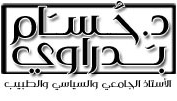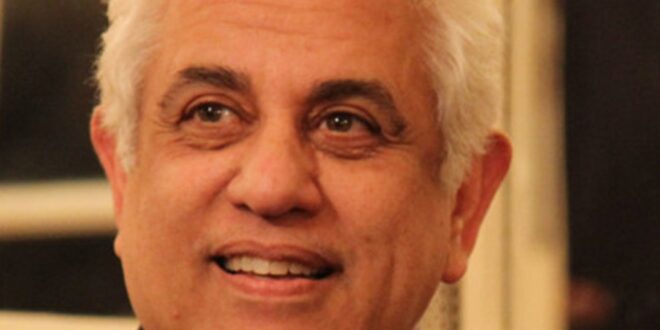This research tackles relationship of the education with the human rights based on four aspects:
First: The fact and agreement of humanity that the education is a fundamental human right.
Second: How this right will be applied and implemented in the frameworks of human rights values.
Third: What and how to merge the human right concept in the education programs and its curricula in the various age stages.
Fourth: Right to work and to live a life of dignity and respect.
The first aspect:
Article 26 of Universal Declaration of Human Rights issued in 1984 which was signed by all states of the world respectively stipulates that:
- Everyone has the right to education. Education shall be free, at least in the elementary and fundamental stages. Elementary education shall be compulsory. Technical and professional education shall be made generally available and higher education shall be equally accessible to all on the basis of merit.
- Education shall be directed to the full development of the human personality and to the strengthening of respect for human rights and fundamental freedoms. It shall promote understanding, tolerance and friendship among all nations, racial or religious groups, and shall further support the activities of the United Nations for the maintenance of peace.
- Parents have a prior right to choose the kind of education that shall be given to their children.
Article 27 stipulates that:
- Everyone has the right freely to participate in the cultural life of the community, to enjoy the arts and to share in scientific advancement and its benefits.
- Everyone has the right to the protection of the moral and material interests resulting from any scientific, literary or artistic production of which he is the author.
What are the goals of the sustainable development?
In 2015 all States Members of the United Nations approved Sustainable Development Goals (SDGs) which are known also as the universal goals for being universal call for eliminating the poverty, protection of the planet and ensuring all people enjoy the peace and prosperity by 2030.
The seventeenth Sustainable Development Goals are integrated – this means that they recognize that the work in any field will affect on the results in other fields and the development shall balance among the social, economic and environmental sustainability.
Through undertaking not to leave any person in the back, the countries are committed to accelerate the progress for the people who are in the back. This is the reason that the Sustainable Development Goals (SDGs) are designed to convert the world into zeros in many sides of the changeable life including abject poverty, hunger, AIDS, discrimination against women and girls.
All need to achieve these desirable targets. Innovation, knowledge and financial resources from the whole society are necessary for achieving the Sustainable Development Goals (SDGs) in each context.
In this context, I would like to focus on the fourth goal which is:
” Ensure inclusive and equitable quality education and promote lifelong learning opportunities for all”
Education’s post-pandemic future
We have to have second thoughts and not repeat the same thing again in the same way and wait for different results, otherwise we would be foolish.
The active teachers recorded educational videos in the framework of the curriculum and present them in YouTube. There are also many educational platforms which are used by the students on the internet. Some schools exerted institutional effort to communicate with their students. We have to seize this opportunity on level of the educational areas and schools to launch new initiatives for training on the new education methods. We have to benefit from the teachers who showed the ability and had the power to communicate with their students outside the scope of routine and traditionalism.
We have to encourage the young people who showed ability to build a system to convert the curricula into three-dimensional material impressively and those who created programs for remote evaluation at low cost.
We have to study the possibility to convert the schools into a mix between the distance learning and face to face learning to reduce the density of classes and accept the new pupils. Of course, I stress here in my speech on respect for the educational bases and importance of presence in the school society but in a new way which may return success to the school education and its value in building the knowledge and creation of well-rounded personality.
The Egyptian people deserve real and tangible achievement in the field of education and human development. Out of our believe that strength of Egypt lies in strength of its people, and strength of its people can’t be achieved except by the continuous work provided that to develop general framework for the development and raising the awareness as well as development of the knowledge and skills level of this people. The only way for achieving this can be through education, culture and media. Moreover, we are optimistic in relation to the current situation as if a new door was opened to us for achieving the progress and updating.
Taking into consideration that any new vision will be useless except with conviction of the society and commitment of the consecutive governments to apply it and deal with its axes considering it constitution of the education in Egypt. This vision shall comply with the changeable fact and the future that we make by our will.
Let me remind you that commitment with clear, comprehensive and known strategy is very important and the building can’t achieve any goal if we start again with each government.
The vision we present is divided into four pillars, and all respect the human rights values:
The first pillar: High quality education for all with no discrimination.
The second pillar: presence of fair, sustainable and efficient institutional framework for management and governance of the education, research and development on the central level reaching to decentralized level and then handling management of the schools.
The third pillar: The digital and technological empowerment of the pupil, student, teacher and teaching staff in the schools and universities as well as development of teaching ways and methods, research and assessment.
The fourth pillar: building well-integrated personality of the pupil and student in all aspects to be a good citizen who is proud of himself, cultured, innovative and proud also of his country, history, interested in building its future and able to accept differences. Taking note that this shall not be done without the culture, art, music and sports practice.
The fifth pillar: The graduate shall be an entrepreneur and has the ability to adapt with the changes around him. He shall be also able to create new work opportunities and compete with his colleagues at local, regional and international level.
The philosophy emanating from division of the vision into five axes may be due to many logic reasons and the most important one is that the vision becomes more understood and clear to the society and to be easily followed up as well as monitoring the implementation by using approved evaluation indicators.
Each axe is divided into many secondary goals and each secondary goal is listed and emanated from it a group of performance indicators. The group of experts who drafted with me Egypt’s vision 2030 delved deeper into the detail of education axe in order to be a well-defined roadmap with time frames.
It requires from the consecutive governments just drafting of a procedural plan for each axe with each goals and indicates including the time frame for implementation and the budgets and cost required for this are determined in addition to responsibility for implementation by body of the Ministry.
It is more importantly to draft success indicators to be a clear guide for the extent of progress that is achieved for each indicator and each goal for one axe so that the follower and interested can judge the performance of the executive authority of the government fairly and transparently regarding achievement of the vision. In addition, we shall ease work of all entities which perform the follow-up and monitoring procedures as applicable in all successful institutions all over the world within the framework of the transparency and integrity.
Secondary goals are listed under these axes or the above mentioned pillars and then the measurement indicators as I said and the expected time period required for the implementation as mentioned in the document and finally the results of monitoring. This division was designed to enable us to simplify the follow up and make it understood to the society as well as monitoring the implementation by using approved measurement indicators.
In order to achieve the vision, we have to take into consideration the importance of the accurate determination of the current situation of education in a comparative perspective around us at both local and international levels. This shall be done within the framework of the national responsibility supported by transparent educational policy and real activation of the governance concept of all these concepts, the constructive accountability and the human rights values.
I stress again on the importance of continuity of commitment to a reference and strategy in the education for ensuring continuity of the efforts of reformation within approved framework. Further, there is no objection to develop it by using approved methodology every number of years.
The proverb states that we can turn each ordeal into an opportunity, however the matter relies on the person who is able to turn the ordeals into opportunities. We faced the spread of (Covid-19) Coronavirus disease one year ago. Moreover, we know that one of the resistance models is the social distancing which led to closure of the educational institutions and staying of more than 24 million pupils and students in their home and almost stop of education. The seriousness of the state to face this pandemic, it closed private education centers and it seemed that their addresses are with the state. Talking about the distance learning appeared including its all elements as a temporary solution and importance of the electronic evaluation of the students appeared also. The Ministry announced its reliance on the researches presented by the students instead of the traditional examination.
The ordeal approached the parents from their children and forced great number of teachers to use the technology to communicate with the students.
The ordeal stopped the education system as if we were in rebooting state (reoperation) (of the education system entirely) but it will return to work again.
The stoppage taught us many things since we couldn’t realize such except through the stoppage experience in the middle of the academic year and no one can make this experience except through what happened.
We knew the importance of the distance learning and its rules.
Finally, we can’t forget that the education in any nation can’t pass level of its teachers.
If we confess this and my certainty that the digitalization is merged in our all elements of our life, we have to invest in people, especially the teachers as we shall give them the position they deserve. This investment is indisputable in relation to the technological infrastructure that shall be made available to each child and home with no cost as a right of the human rights.
 Dr. Hossam Badrawi Official Website
Dr. Hossam Badrawi Official Website


